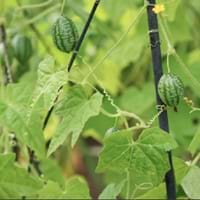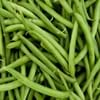Life Span
Annual
Perennial
Type
Vegetable
Flowering Plants, Fruits, Herbs, Shrubs
Origin
Central America, Mexico
Australia, South America
Types
Slicing, Pickling and burpless
Adams Elderberry, Black Beauty Elderberry, Black Lace Elderberry, Johns Elderberry, Nova Elderberry
Habitat
Floodplains, Wet forest
Farms, Homesteads, Near organic waste disposal
USDA Hardiness Zone
7-8
4-8
Sunset Zone
A3, H1, H2, 1a, 1b, 2a, 2b, 3a, 3b, 4, 5, 6, 7, 8, 9, 10, 11, 12, 13, 14, 15, 16, 17, 18, 19, 20, 21, 22, 23, 24
2a, 2b, 3a, 3b, 4, 5, 6, 7, 14, 15, 16, 17
Habit
Vining/Climbing
Upright/Erect
Flower Color
Yellow, Gold
White
Flower Color Modifier
Bicolor
Not Available
Fruit Color
Green
Purple, Red
Leaf Color in Spring
Light Green
Green
Leaf Color in Summer
Green, Dark Green
Green
Leaf Color in Fall
Green, Dark Green, Yellow green
Yellow green
Leaf Color in Winter
Not Available
Not Available
Leaf Shape
Heart-shaped
Compound
Plant Season
Summer, Fall
Early Spring
Sunlight
Full Sun, Partial Sun
Full Sun, Part sun
Growth Rate
Very Fast
Medium
Type of Soil
Loam
Loamy, Sandy, Well drained
The pH of Soil
Neutral
Slightly Acidic
Soil Drainage
Well drained
Average
Bloom Time
Early Summer, Summer, Late Summer, Early Fall, Indeterminate
Early Spring, Spring
Tolerances
Drought
Pollution
Where to Plant?
Container, Ground
Ground
How to Plant?
Seedlings, Stem Planting
Grafting, Seedlings
Plant Maintenance
Medium
Medium
Watering Requirements
Keep ground moist, Requires a lot of watering, Requires regular watering, Requires watering in the growing season
Requires regular watering, Use Mulches to help prevent water loss during hot and windy weather
In Summer
Lots of watering
Lots of watering
In Spring
Moderate
Moderate
In Winter
Average Water
Average Water
Soil pH
Neutral
Slightly Acidic
Soil Type
Loam
Loamy, Sandy, Well drained
Soil Drainage Capacity
Well drained
Average
Sun Exposure
Full Sun, Partial Sun
Full Sun, Part sun
Pruning
Prune after flowering, Remove shoots
Cut or pinch the stems, No pruning needed in the early stages, Prune for shortening long shoots, Prune if you want to improve plant shape, Prune in winter, Prune ocassionally, Remove deadheads
Fertilizers
Compost, organic fertlizers
All-Purpose Liquid Fertilizer
Pests and Diseases
Bacteria wilt, Fungal Diseases, fungus, Fusarium wilt, Leaf spot, Striped cucumber beetles
Canker, Leaf spot, Powdery mildew, Stem spot, Tomato Ringspot Virus
Plant Tolerance
Cold climate
Drought
Flower Petal Number
Single
Single
Foliage Texture
Coarse
Medium
Foliage Sheen
Matte
Matte
Attracts
Ants, Birds, Flying insects, Insects, Rats, Squirrels
Birds
Allergy
Throat itching, Vomiting
Diarrhea, Nausea, Vomiting
Aesthetic Uses
Showy Purposes
Not Used For Aesthetic Purpose
Beauty Benefits
Not Available
Not Available
Environmental Uses
Food for animals, Food for birds
Air purification
Medicinal Uses
Antioxidants, Combats Stress, Fiber, Improve heart health, Indigestion, Inflammation, Rich in Iron
constipation, Fever, Heart problems, High cholestrol, HIV/AIDS, Nerve pain, swine flu
Part of Plant Used
Fruits, Seeds
Flowers, Fruits
Other Uses
Used As Food, Used as Ornamental plant, Used for its medicinal properties
Not Available
Used As Indoor Plant
Yes
No
Used As Outdoor Plant
Yes
Yes
Garden Design
Edible, Herb / Vegetable, Vine
Not Available
Botanical Name
MELOTHRIA scabra
Sambucus nigra
Common Name
Mexican Sour Gherkins, cucamelon
Elderberry
In Hindi
Mousemelon
Elderberry
In German
Maus Melone
Holunderbeere
In French
Mousemelon
Sureau
In Spanish
Mousemelon
Saúco
In Greek
πεπόνι ποντίκι
Elderberry
In Portuguese
melão rato
Sabugueiro
In Polish
mysz melona
Bez czarny
In Latin
mouse melon
Elderberry
Phylum
Tracheophyta
Magnoliophyta
Class
Magnoliopsida
Magnoliopsida
Order
Cucurbitales
Dipsacales
Family
Cucurbitaceae
Adoxaceae
Clade
Angiosperms, Eudicots, Rosids
Angiosperms, Asterids, Eudicots
Tribe
Melothrieae
Not Available
Subfamily
Cucurbitoideae
Not Available
Number of Species
Not Available
Season and Care of Mouse Melon and Elderberry
Season and care of Mouse Melon and Elderberry is important to know. While considering everything about Mouse Melon and Elderberry Care, growing season is an essential factor. Mouse Melon season is Summer and Fall and Elderberry season is Summer and Fall. The type of soil for Mouse Melon is Loam and for Elderberry is Loamy, Sandy, Well drained while the PH of soil for Mouse Melon is Neutral and for Elderberry is Slightly Acidic.
Mouse Melon and Elderberry Physical Information
Mouse Melon and Elderberry physical information is very important for comparison. Mouse Melon height is 15.20 cm and width 180.00 cm whereas Elderberry height is 9.00 cm and width 8.00 cm. The color specification of Mouse Melon and Elderberry are as follows:
Mouse Melon flower color: Yellow and Gold
Mouse Melon leaf color: Light Green
Elderberry flower color: White
- Elderberry leaf color: Green
Care of Mouse Melon and Elderberry
Care of Mouse Melon and Elderberry include pruning, fertilizers, watering etc. Mouse Melon pruning is done Prune after flowering and Remove shoots and Elderberry pruning is done Cut or pinch the stems, No pruning needed in the early stages, Prune for shortening long shoots, Prune if you want to improve plant shape, Prune in winter, Prune ocassionally and Remove deadheads. In summer Mouse Melon needs Lots of watering and in winter, it needs Average Water. Whereas, in summer Elderberry needs Lots of watering and in winter, it needs Average Water.





